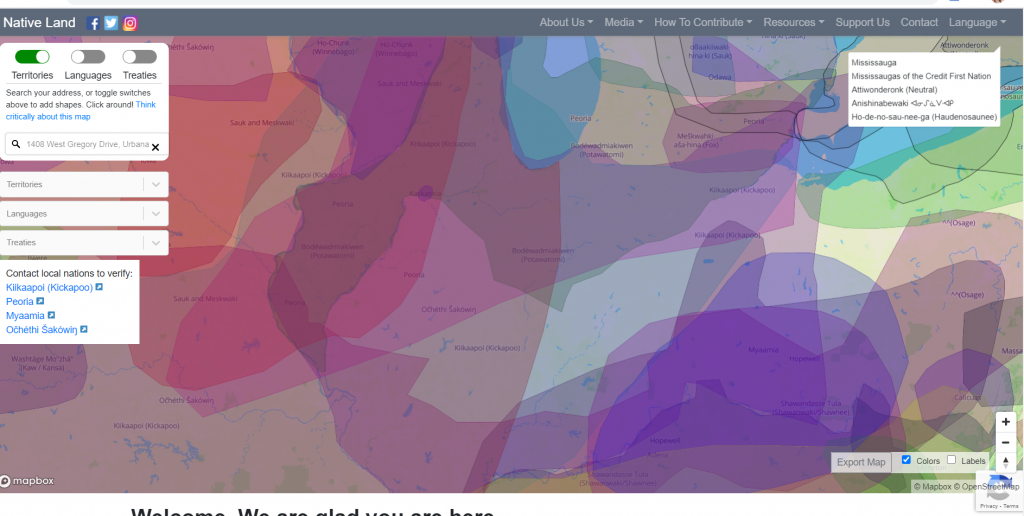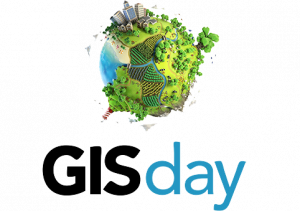Fall break is fast approaching and with it will be Thanksgiving! No matter what your traditions are, we all know that this year’s holiday season will look a little bit different. As we move into the Thanksgiving holiday, I wanted to share a mapping project to give thanks and recognize the native lands we live on.
Native Land is an open-source mapping project that shows the indigenous territories across the world. This interactive map allows you to input your address or click and explore to determine what indigenous land you reside on. Not only that but Native Land shares educational information about these nations, their languages, or treaties. They also include a Teacher’s Guide for various wide age range from children to adults. Users are able to export images of their map, too!
Canadian based and indigenous-led, Native Land Digital aims to educate and bring awareness to the complex histories of the land we inhibit. This platform strives to create conversations about indigenous communities between those with native heritage as well as those without. Native Land Digital values the sacredness of land and they use this platform to honor the history of where we reside. Learn more about their mission and impact on their “Why It Matters” page.
Native Land uses MapBox and WordPress to generate their interactive map. MapBox is an open source mapping platform for custom designed maps. Native Land is available as an App for iOS and Android and they have a texting service, as well. You can find more information about how it works here.
If you’d like to learn more about mapping software, the Scholarly Commons has Geographic Information Systems (GIS) software, consultations, and workshops available. The Scholarly Commons webpage on GIS is a great place to get started.
The University of Illinois is a land-grant institution and resides on Kickapoo territory. Where do you stand?
University of Illinois Urbana-Champaign Land Acknowledgement Statement
As a land-grant institution, the University of Illinois at Urbana-Champaign has a responsibility to acknowledge the historical context in which it exists. In order to remind ourselves and our community, we will begin this event with the following statement. We are currently on the lands of the Peoria, Kaskaskia, Piankashaw, Wea, Miami, Mascoutin, Odawa, Sauk, Mesquaki, Kickapoo, Potawatomi, Ojibwe, and Chickasaw Nations. It is necessary for us to acknowledge these Native Nations and for us to work with them as we move forward as an institution. Over the next 150 years, we will be a vibrant community inclusive of all our differences, with Native peoples at the core of our efforts.




